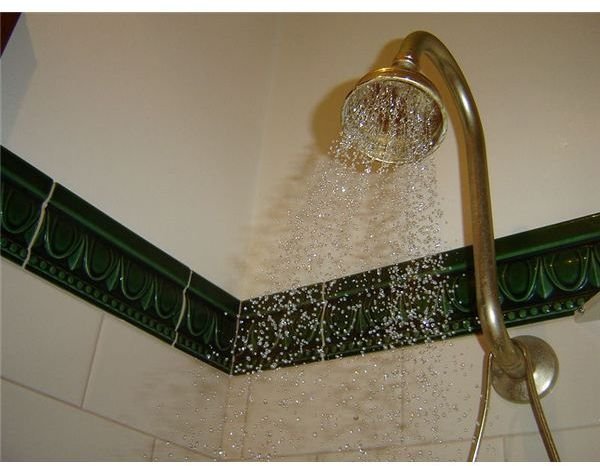A Look at Showerhead Bacteria and the Growth of Bacteria in this Common Appliance
Bacteria in Water
Every time you turn on the shower you are spraying your body with millions of bacteria, and some could potentially cause you harm. They hitch a ride in the water droplets and land on your skin and in your body.
This seemingly unpleasant finding comes from research carried out in 45 shower heads in homes and public buildings from nine cities in seven different states in the US.
Scientists from the University of Colorado, Boulder examined the gunk inside the showerheads and analyzed RNA ribosomal gene sequences from swab samples they had taken. These were compared with swabs taken from the water before it entered the shower. So what was found lurking inside the showerheads?
Showerhead Bacteria
The Colorado team led by Professor Norman Pace found many different types of bacteria but one in particular caused some concern. The scientists discovered that in 30% of the showerheads studied the levels of Mycobacterium avium were 100 times higher than in ordinary house water supplies.
Mycobacterium avium bacteria belong to the same family as TB and at high enough levels can cause lung disease. Whilst various newspapers reported that this meant that showers are now bad for us the scientists were at pains to put out that bathroom bugs are hardly ever a problem for healthy people. Those that could be at risk of developing an infection are individuals with a weakened immune system, like the elderly or those who are fighting off other diseases.
The research was published in the Proceedings of the National Academy of Sciences in September 2009 and the scientists think that their findings might explain why there has been a rise in the number of lung infections in recent years - because more people are taking showers instead of baths.
Even More Showerhead Bacteria
Other types of bacteria that could be spewing out of your showerhead have been identified by previous studies and they include: -
- Pseudomonas aeruginosa - an opportunistic human pathogen which means that it will take advantage of any weakness in a host’s defence system to initiate an infection. It causes respiratory problems, gastrointestinal infections, bone infections as well as a variety of other systemic infections.
- Legionella bacteria - including Legionella pneumophila, the bacterium that causes Legionnaire’s Disease.
Growth of Bacteria
This Colorado research is contributing to a much bigger study that is focused on the microbiology of the indoor environment to see how it might contribute to disease.
For those who are concerned about whether their showerheads are harbouring millions of pathogenic little beasties the scientists who carried out the research think that a metal showerhead might be a good alternative. This is because plastic ones are more conducive to the growth of bacteria as they stick to the plastic. In addition the bacteria build up in the showerhead and create a biofilm, so there are many more of them when you first turn a shower on. Stepping under the water after about 30 seconds means bathing in fewer bacteria. Regular and thorough cleaning of the showerhead would also achieve this goal.
The research into showerhead nasties is still really in its early stages. According to the Health Protection Agency in the UK additional work will be needed to find out whether the presence of these organisms is actually associated with an increased risk of infection.
Reference
Leah M. Feazel, Laura K. Baumgartner, Kristen L. Peterson, Daniel N. Frank, J. Kirk Harris, and Norman R. Pace. Opportunistic pathogens enriched in showerhead biofilms. PNAS 2009 106:16393-16399; published online before print September 14, 2009, doi:10.1073/pnas.0908446106
